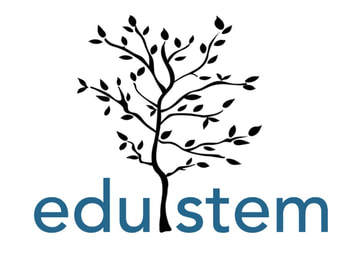An Introduction to Metabolism
Ayush Noori | EduSTEM Advanced Biology
EXTENSION
This extension explores the isoleucine and valine biosynthesis pathways, collectively known as the branched chain amino acid (BCAA) synthesis superpathway, and how they regulate each other.
Biochemistry 5th edition - https://www.ncbi.nlm.nih.gov/books/NBK22371/
Section 24.3.1 (Feedback Inhibition and Activation under Branched Pathways Require Sophisticated Regulation) of this book discusses the branched chain amino acid (BCAA) synthesis pathway and regulation of threonine deaminase as follows:
“Consider, for example, the biosynthesis of the amino acids valine, leucine, and isoleucine. A common intermediate, hydroxyethyl thiamine pyrophosphate (hydroxyethyl-TPP; Section 17.1.1), initiates the pathways leading to all three of these amino acids. Hydroxyethyl-TPP can react with α-ketobutyrate in the initial step for the synthesis of isoleucine. Alternatively, hydroxyethyl-TPP can react with pyruvate in the committed step for the pathways leading to valine and leucine. Thus, the relative concentrations of α-ketobutyrate and pyruvate determine how much isoleucine is produced compared with valine and leucine. Threonine deaminase, the pyridoxal phosphate (PLP) enzyme that catalyzes the formation of α-ketobutyrate, is allosterically inhibited by isoleucine (Figure 24.22). This enzyme is also allosterically activated by valine. Thus, this enzyme is inhibited by the product of the pathway that it initiates and is activated by the end product of a competitive pathway. This mechanism balances the amounts of different amino acids that are synthesized.”
Please see Figure 24.22 from that chapter, which diagrams the BCAA synthesis pathway.
“The regulatory domain in threonine deaminase is very similar in structure to the dimeric regulatory domain in 3-phosphoglycerate dehydrogenase (Figure 24.23). In this case, the two half regulatory domains are fused into a single unit with two differentiated amino acid-binding sites, one for isoleucine and the other for valine. Sequence analysis shows that similar regulatory domains are present in other amino acid biosynthetic enzymes. The similarities suggest that feedback-inhibition processes may have evolved by the linkage of specific regulatory domains to the catalytic domains of biosynthetic enzymes.”
(Threonine deaminase is diagrammed here: https://www.ncbi.nlm.nih.gov/books/NBK22371/figure/A3378/?report=objectonly)
BioCyc Database Collection: L-isoleucine biosynthesis I (from threonine) superpathway of branched chain amino acid biosynthesis
BioCyc is a collection of Pathway and Genome Databases and offers a more detailed view of the BCAA synthesis pathway. Please see their diagram for the biosynthesis pathway from the first link. Note that 2-oxobutanoate is another name for α-ketobutyrate.
The following, from https://hort.purdue.edu/rhodcv/hort640c/BRANCH/br00003.htm, aids in understanding the pathway.
“Acetohydroxyacid synthase (AHAS) [EC 4.1.3.18], also known as acetolactate synthase (ALS), catalyzes the condensation of two molecules of pyruvate to yield acetolactate (VALINE PATHWAY), and the condensation of pyruvate and 2-oxobutyrate to yield acetohydroxybutyrate (ISOLEUCINE PATHWAY).
In both reactions an intermediate is first formed between pyruvate and thiamine pyrophosphate (TPP) as cofactor. This intermediate undergoes decarboxylation to produce a stabilized anion of hydroxyethyl-TPP (HET-PP), which acts as a nucleophile on the 2-keto group of a second molecule of pyruvate or 2-oxobutyrate, releasing TPP and acetolactate or acetohydroxybutyrate. AHAS is dependent on FAD for enzyme activity, although there is no net oxidation or reduction associated with the reaction (Singh and Shaner, 1995).”
Therefore, the CENTER (fourth) STEP α-ketobutyrate (2-oxobutanoate) à 2-acetyhydroxybutanoate requires hydroxyethyl-TPP, and hence causes valine to activate threonine deaminase.
The BioCyc database also discusses counterintuitive valine inhibition of AHAS, which appears to be overcome by the abundance of α-ketobutyrate (2-oxobutanoate):
“As a consequence of having several of its component enzymes involved in the synthesis of three different amino acids, the pathway of isoleucine biosynthesis is subject to regulation by all three amino acids. The first enzyme in the pathway, L-threonine deaminase, is downregulated by isoleucine and leucine, but is upregulated by valine. The following pathway step, catalyzed by acetohydroxybutanoate synthases (AHAS) I and III, is inhibited by all three amino acids. This apparent paradox of valine stimulation of step one followed by valine inhibition of step two is a product of the preference of AHAS III for processing of the isoleucine precursor 2-oxobutanoate rather than the valine precursor pyruvate. When valine is abundant in the cell, both AHAS enzymes are inhibited, blocking valine production and potentially disrupting isoleucine synthesis as well. However, the stimulation of L-threonine deaminase generates a substantial pool of 2-oxobutanoate. Combined with the high affinity of AHAS III for this compound, this allows the isoleucine synthesis to continue despite inhibition caused by the parallel valine synthesis pathway.”
Chen L, Chen Z, Zheng P, Sun J, Zeng AP. Study and reengineering of the binding sites and allosteric regulation of biosynthetic threonine deaminase by isoleucine and valine in Escherichia coli. Appl Microbiol Biotechnol. 2013 Apr;97(7):2939-49. doi: 10.1007/s00253-012-4176-z. Epub 2012 Jun 7. https://www.ncbi.nlm.nih.gov/pubmed/22669632
Finally, Chen et al. discusses which amino acid residues are involved in the binding and regulation of threonine deaminase by Ile and Val:
“Our results demonstrated that each regulatory domain of the TD monomer possesses two nonequivalent effector-binding sites. The residues R362, E442, G445, A446, Y369, I460, and S461 only interact with Ile while E347, G350, and F352 are involved not only in the Ile binding but also in the Val binding.”
With these courses, we hope to further our mission to make high-quality STEMX education accessible for all. For questions or support, please feel free to reach out to me at anooristudent@outlook.com.
Best Regards,
Ayush Noori
EduSTEM Boston Chapter Founder
Resources:
The premier source of past and present medical literature. Most supplemental information in Extensions is available via PubMed. When searching PubMed, be sure to use the “Free full text,” and “Sort by: Best Match” filters to find relevant and accessible results.
A large database of useful 3D structures of large biological molecules, including proteins and nucleic acids. Use the search bar to find a molecule of interest, which can then be examined using the Web-based 3D viewer.
